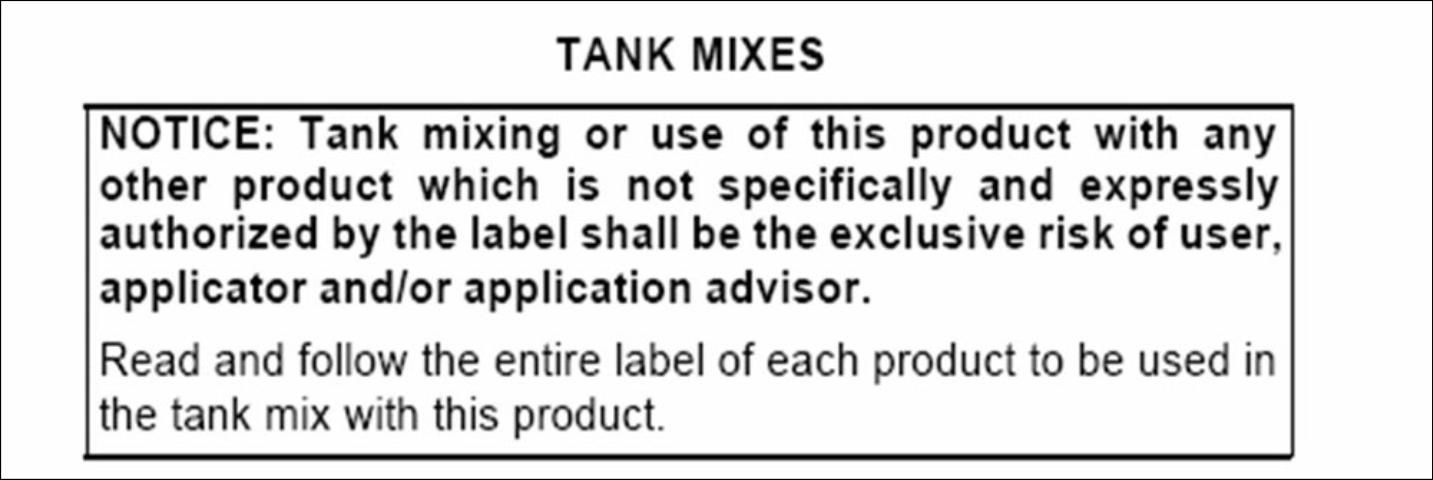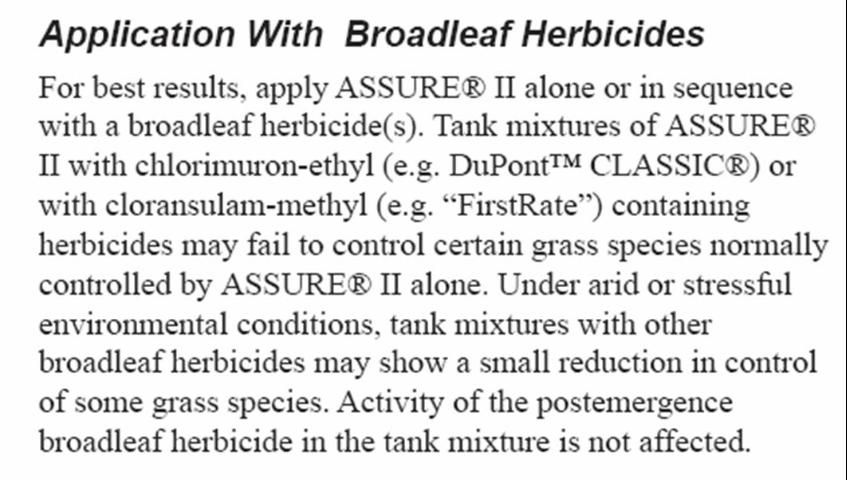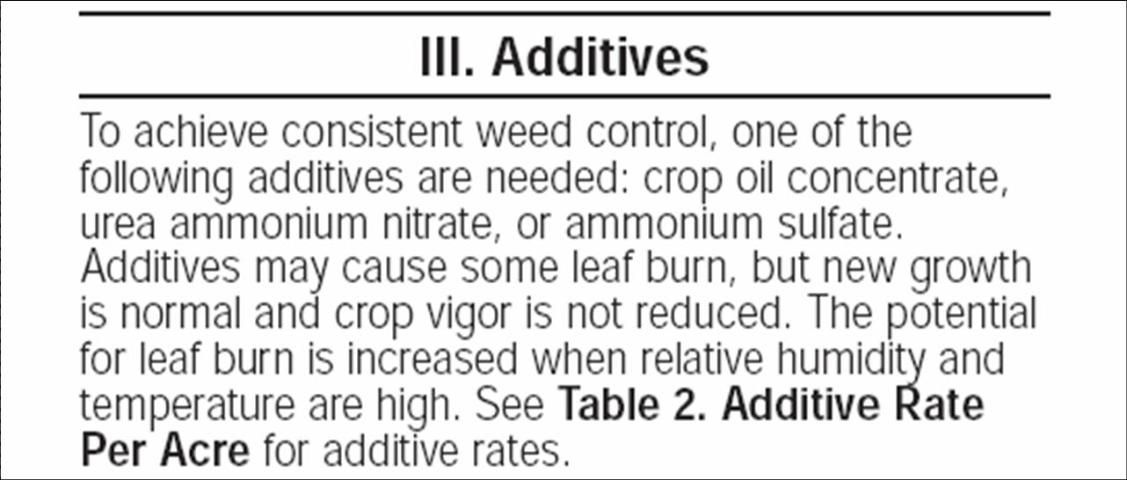This document describes the types of interactions that can occur when pesticides are mixed and applied with other agricultural chemicals. Examples of typical incompatibilities and interactions are provided.
Introduction
An agricultural consultant's report on a peanut crop takes note of an economic threshold– level thrips population as well as the emergence of several species of weeds. Because the weather forecast predicted a dominant rainy system over the next few days, the farm manager faced the all-too-common dilemma of either quickly treating the crop for both problems or hoping for the chance that the rain might clear. Deciding that the most expedient choice was to treat the crop for both problems at once, he applied a tank mix of herbicide and insecticide.
Applying mixtures of different pesticides, or pesticides in combination with various adjuvants and fertilizers, can be an efficient approach, but there can also be negative effects. When choosing to tank-mix various agricultural chemicals, the applicator should be aware of the potential for adverse effects. Some manufacturers' pesticide labels will expressly state that the applicator assumes all liability if tank-mixing (Figure 1). However, unless expressly prohibited by a pesticide's label, mixing is legal.

Incompatibilities and Mixing
Some labels will provide precautions regarding potential physical or chemical compatibility problems when combining the contents with certain substances. For example, if the effectiveness of a pesticide's active ingredient is reduced or rendered ineffective, then that is considered a chemical incompatibility. In areas where pesticides, particularly certain insecticides, are mixed with alkaline water, inactivation has been known to occur, especially when held in suspension overnight or for extended periods. Physical incompatibilities refer to mixtures that form flakes, gels, layers, crystals, or other precipitates that are not suitable for application through spraying equipment. More information on the different types of pesticide formulations may be obtained from the UF/IFAS Extension EDIS Document, PI231 Pesticide Formulations at https://edis.ifas.ufl.edu/pi231. If you are planning to mix pesticides with unknown compatibilities, it is always wise to mix proportionate amounts of all ingredients on a small scale, such as in a pint- or quart-sized jar. Manufacturers' labels will also recommend this practice.
Kinds of Interactive Responses
Synergism
A synergistic response is one in which a tank mix of two pesticides, or a pesticide with another substance, produces a greater response than the added effects of each substance applied separately. This can be a benefit because lower application rates are required than when the two chemicals are applied separately and therefore smaller amounts of pesticides enter the environment. A common example of a synergistic response occurs when piperonyl butoxide is mixed with pyrethrum insecticides.
Enhancement
This response is similar to synergism, with the difference that it involves the mixing of a pesticide with some type of adjuvant. When enhancement occurs, the response to the pesticide mixed with adjuvant is greater than that which would occur if the pesticide was applied alone. Adjuvants essentially function the same as inert ingredients that are added by a manufacturer: they make the product easier to apply and more effective. Examples of commonly used adjuvants include various formulations of surfactants and crop oils. Many postemergence herbicide labels will routinely advise the user to add an adjuvant, usually crop oil concentrate or surfactant, for maximizing weed control. This is another common example of enhancement.
Antagonism
This is an undesirable response for several reasons. If pesticides are applied in a mixture, the result may be a lower level of pest control than if either pesticide were applied alone. Another undesirable antagonistic response is crop injury. Examples of antagonistic responses have been well documented. Some of the most common involve mixtures of postemergence grass and broadleaf herbicides (Figure 2). Most often, the level of grass control is reduced when postemergence grass herbicides are mixed with postemergence broadleaf herbicides. Crop injury due to mixtures of herbicides and certain insecticide families, particularly carbamate and organophosphate insecticides, has been known to occur (Figure 3).


Additive
An additive effect occurs when a mixture of pesticides is neither synergized nor antagonized, but each pesticide provides the same response as if either were applied (Figure 4).

Additional Information
Fishel, F. M. 2013. Pesticide Formulations. PI-231. Gainesville: University of Florida Institute of Food and Agricultural Sciences. https://edis.ifas.ufl.edu/pi231